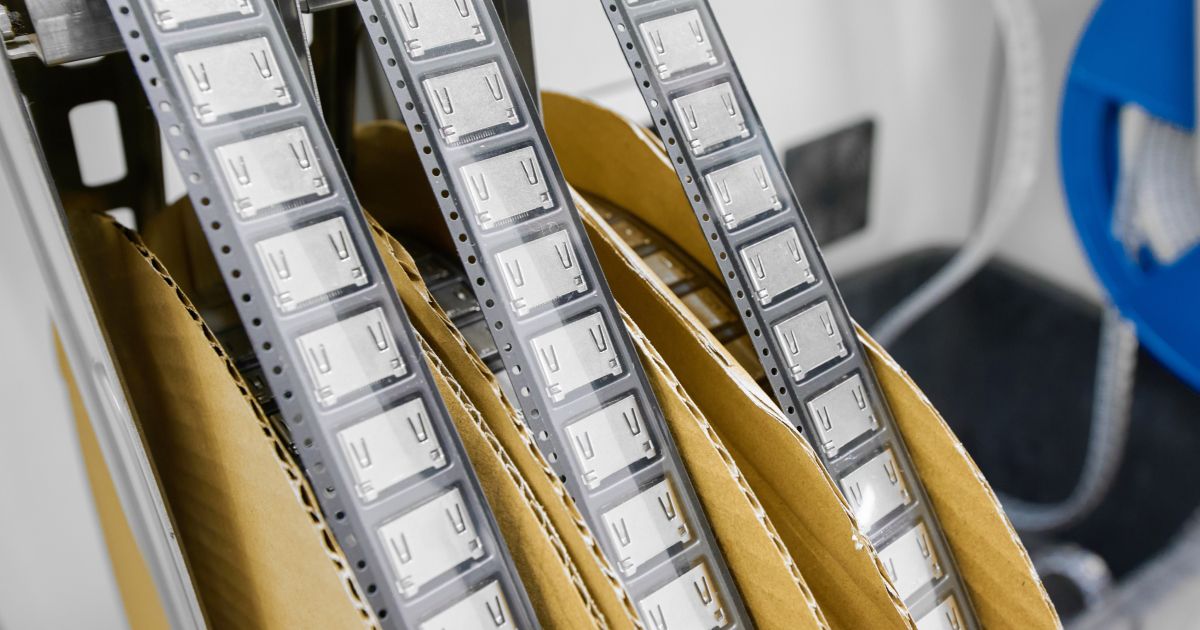Use BOM Inventory Management to Reduce Emergency Reorders and Stockouts

When it comes to electronics manufacturing, few things are as costly and disruptive as a sudden stockout, which contributes to an estimated $50 billion in annual losses for industrial manufacturers due to unplanned downtime. When a critical component is suddenly unavailable during volume production, SMT lines grind to a halt, deadlines are missed, and everyone scrambles to find an alternative part number. The solution lies not in better guesswork, but in a more innovative, more integrated approach to your Bill of Materials (BOM) and inventory management.
Key Takeaways
- Treat your BOM as more than just a design document. It's the foundational data source for your entire procurement and manufacturing process.
- Static spreadsheets are a recipe for disaster. Integrating your BOM with up-to-date inventory and supplier data is the only way to get an accurate picture of your needs and vulnerabilities.
- With over 80% of industrial businesses experiencing unplanned downtime in recent years, a reactive approach is no longer viable. Effective BOM inventory management allows you to anticipate shortages, manage component lifecycles, and identify alternative parts before a stockout occurs.
- A unified platform like Altium Develop connects multidisciplinary teams, allowing them to co-create products in a single environment with shared data.
What Is BOM Inventory Management?
BOM inventory management is the practice of directly linking your bill of materials with your inventory management system, supplier data, and production schedule. Instead of being a static list of parts, the BOM becomes a dynamic dashboard that shows the parts needed in a design and the latest stock levels, component availability, lead times, and pricing for each line item in the BOM. This creates a Single Source of Truth (SSoT), ensuring that decisions made by design, procurement, and manufacturing teams are all based on the same accurate, up-to-the-minute information.
Key Strategies for Integrating Your BOM and Inventory
Effectively merging your design data with supply chain logistics requires a strategic approach. Here are the most critical steps to take.
Establish a Single Source of Truth (SSoT)
The first step is to break down the silos between departments. An engineer's component library, a buyer's procurement list, the distributor's parts inventory, and a company’s parts inventory don’t have to exist in separate, disconnected systems. A cloud-based platform allows every stakeholder to access and work from the same centralized component and BOM data. Having the BOM and distributor data brought into an ERP/MRP/IMS system gives the full set of availability information for each line in the BOM.
Implement Up-To-Date Data Syncing
Manual data entry is now a relic of the 1990s. A modern system uses APIs to connect your design environment directly to your ERP, MRP, or IMS systems. This automated, two-way communication ensures that when an engineer specifies a part, the system can instantly check its stock level, price, and availability from approved vendors.
Leverage Demand Forecasting
BOM data in an MRP gives the ability to compare required part quantities in each assembly against scheduled production runs, giving early warnings when currently-held or consigned parts inventory will run out. This gives buyers more time to execute their purchases, or in the case of stockouts, buyers will have more time to make part swaps and approve alternates when necessary.
A Tale of Two Workflows: The Cost of Disconnection
To understand the impact of an integrated platform, let's look at a common scenario through two different lenses.
The Old Way: An Example Sourcing Challenge
An electrical engineer, Sarah, finishes her PCB layout after weeks of hard work. She exports the BOM to a spreadsheet and emails it to David in procurement. A few days pass. Swamped with requests, David finally reviews the list and discovers that a critical microcontroller has a 52-week lead time and no stock anywhere, an issue that has become increasingly common, with some component lead times stretching from a normal 8-12 weeks to over a year.
He emails Sarah, who is now deep into another project. She has to stop and search for a pin-compatible replacement. The only suitable alternate that is application-compatible comes in a larger package, meaning there is a different footprint and pinout. This would require a significant amount of PCB re-design time and changes to the device firmware, and ultimately the decision is made to purchase the original MCU from a grey market broker instead of a franchise distributor.
The decision creates two bad paths forward: either spend weeks implementing the swap, or create a new risk that can only be addressed with counterfeit testing.
The Altium Develop Way: Co-Creation in Real Time
Now, imagine Sarah completes the initial schematics and performs a BOM review with the exported BOM. The platform, connected to the latest supplier data, immediately flags the microcontroller as a high sourcing risk with no stock. Sarah sees the problem before proceeding into the PCB layout.
Sarah can perform two important tasks quickly:
- Find an alternative part, including a reference design that allows a quick swap into the existing schematics.
- Inform the application developers of the new pin connections list so they can use these pin selections in their embedded firmware.
Procurement can also be involved in the selection of the alternate part as they can suggest pre-vetted, available replacements from the company's approved vendors.
The Tangible Benefits of a Unified Approach
Adopting an integrated BOM inventory management strategy delivers clear, measurable results that impact your bottom line and operational efficiency.
|
Benefit |
How It's Achieved |
|
Reduced Costs |
Eliminates premium pricing and expedited shipping fees from emergency reorders. Minimizes costs associated with production downtime. |
|
Increased Production Uptime |
Ensures all necessary components are available when needed, preventing line-down situations and maintaining a smooth production flow. |
|
Improved Agility & Resilience |
With pre-vetted alternatives and the latest supplier data, you can pivot quickly when a component becomes unavailable, mitigating supply chain risk. |
|
Enhanced Collaboration |
Design, procurement, and manufacturing teams are aligned, reducing errors and speeding up the entire product development lifecycle. |
Choosing the Right Tools for the Job
This is where a solution like Altium Develop makes a fundamental difference. It is a purpose-built solution that combines the best of Altium Designer and Altium 365 into a single environment for multidisciplinary product co-creation. It moves teams beyond simple collaboration into true co-creation, bringing electrical, mechanical, software, and supply chain experts into a shared space with built-in coordination. This allows teams to assess sourcing risk during the design phase, not after it’s too late.
Frequently Asked Questions (FAQ)
My company is small. Is this integrated approach too complex for us?
Absolutely not. In fact, Altium Develop is designed for small teams and individuals. It is an out-of-the-box cloud platform that enables effective co-creation without the high cost and overhead of traditional enterprise systems. It removes the friction that slows teams down, making this powerful approach accessible to everyone.
How do you handle component substitutions and alternates in an integrated system?
A sound system allows you to formally define and link alternates to a primary component directly within your library. When the primary part is unavailable, the system can automatically flag approved, pre-vetted replacements for the procurement team, complete with up-to-date pricing and stock information. This is a core function of a managed BOM.
Try Altium Develop
Whether you need to build reliable power electronics or advanced digital systems, Altium Develop unites every discipline into one collaborative force. Free from silos. Free from limits. It’s where engineers, designers, and innovators work as one to co-create without constraints. Experience Altium Develop today!











